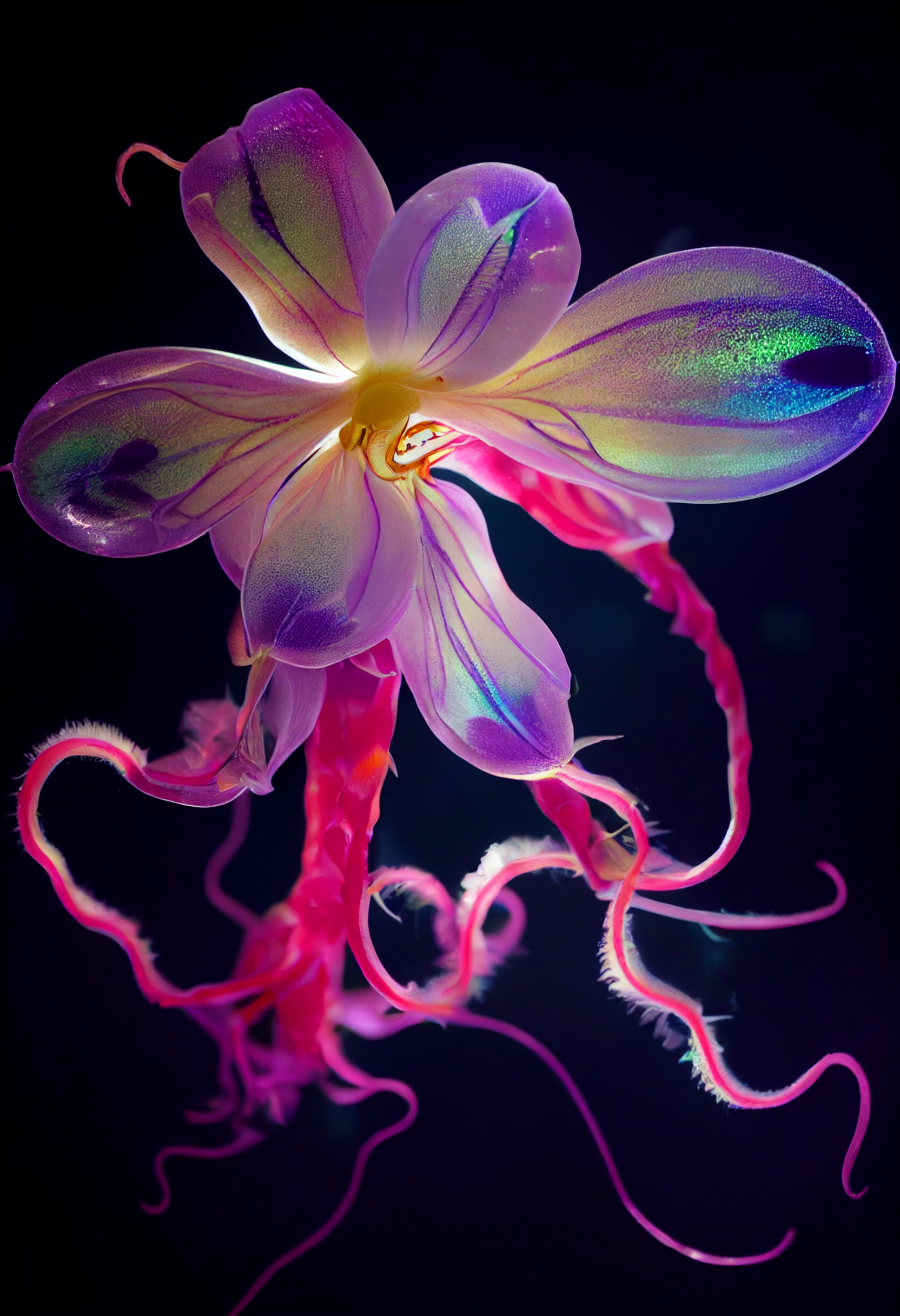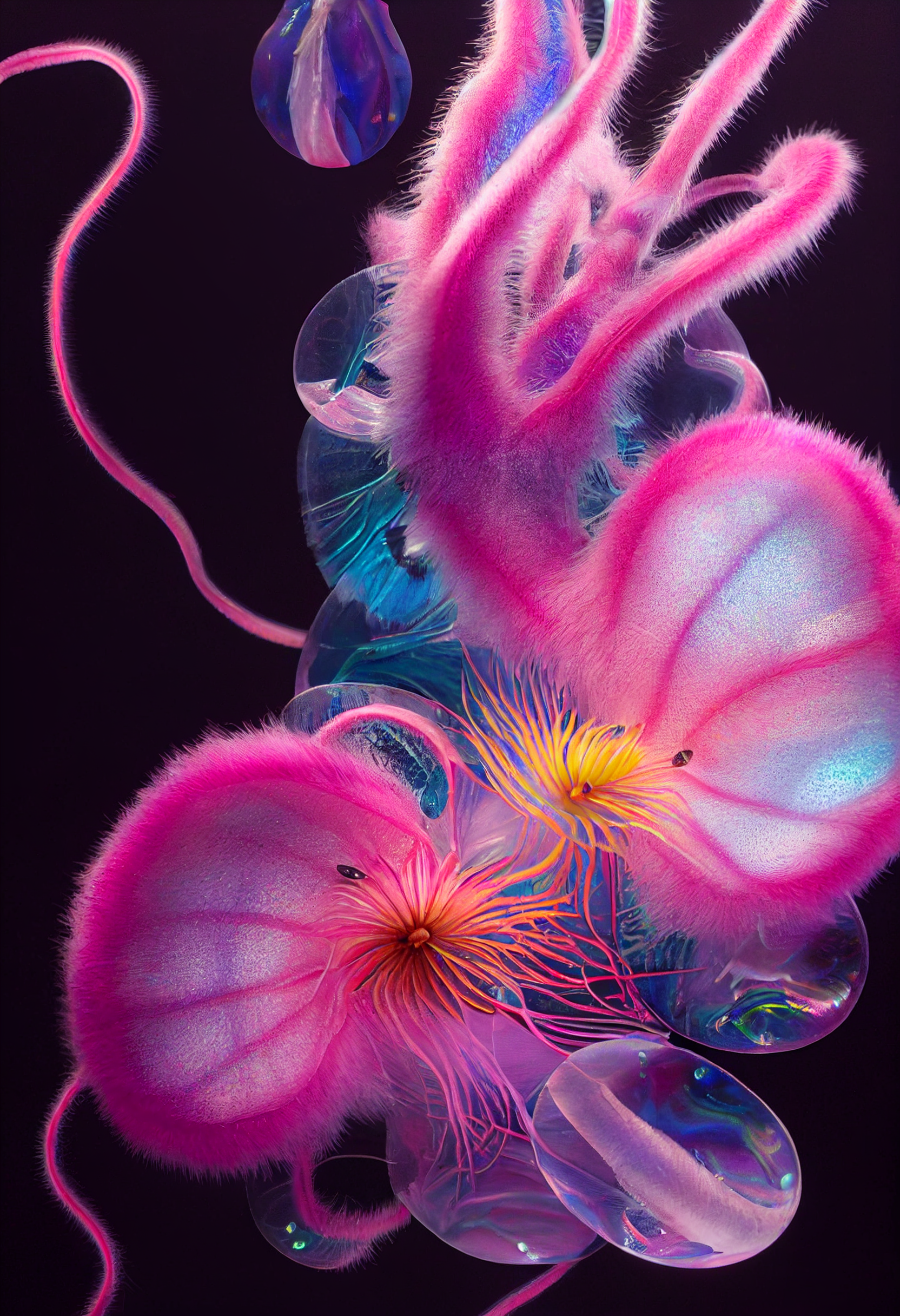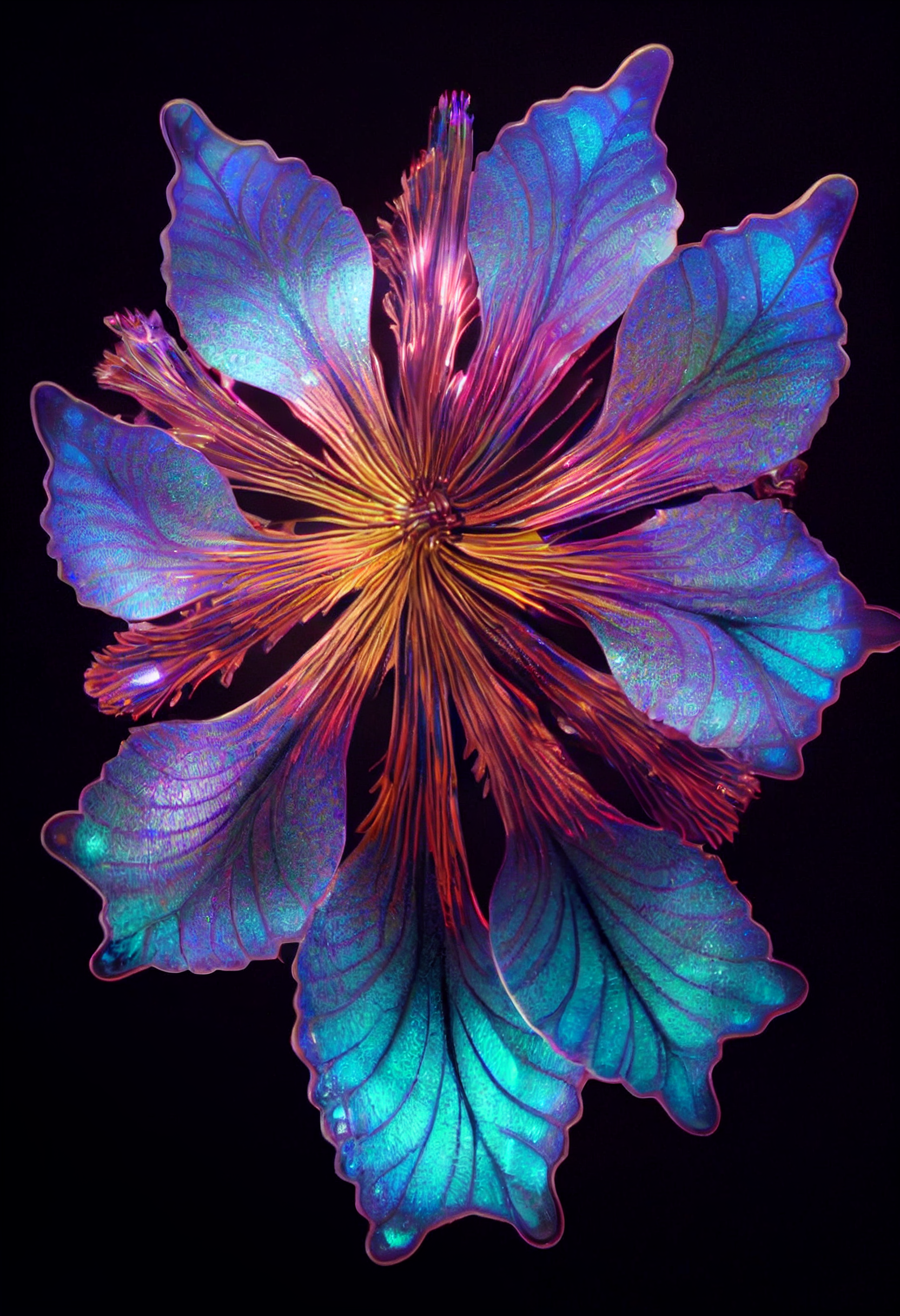GOLDILOCKS FLOWERS
A century ago astronomers sought to attribute the seasonal darkening of Mars to the growth of vegetation. They studied the spectrum of light reflected off the surface or signs of green plants. One difficulty with this strategy was evident to H. G. Wells who had imagined a different scenario of Martian plant-life in his science fiction epic The War of the Worlds: “The vegetable kingdom in Mars. Instead of having green for a dominant colour, is of a vivid blood-red tint.”
It turned out to be wrong, but now that we can detect polarised light reflected directly off other worlds, we could spot unmistakable evidence of photosynthesis.
Goldilocks FLOWERS is speculative artscience project exploring alien life. Earth has a diversity of photosynthetic organisms besides green plants. Some land plants have red leaves and underwater algae and photosynthetic bacteria come in a rainbow of colours. Purple bacteria soak up solar infrared radiation as well as visible light. Imagine What Plants Would Look Like on Alien Worlds …
The artist is using AI (stable diffusion) as a tool to speculate on alien fauna and flora to predict colours of photosynthesising organisms (such as the plants of Earth) under other suns and with different blankets of atmospheres.




